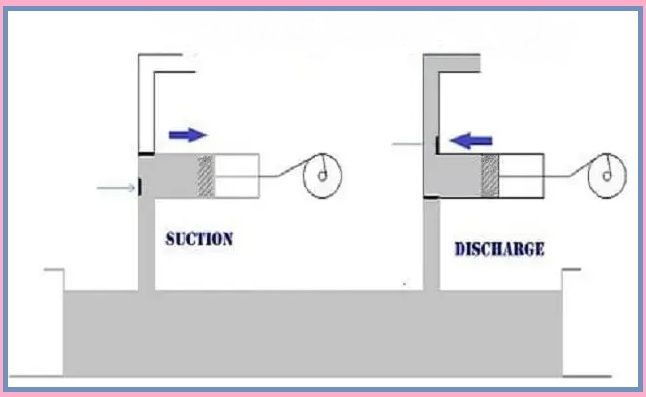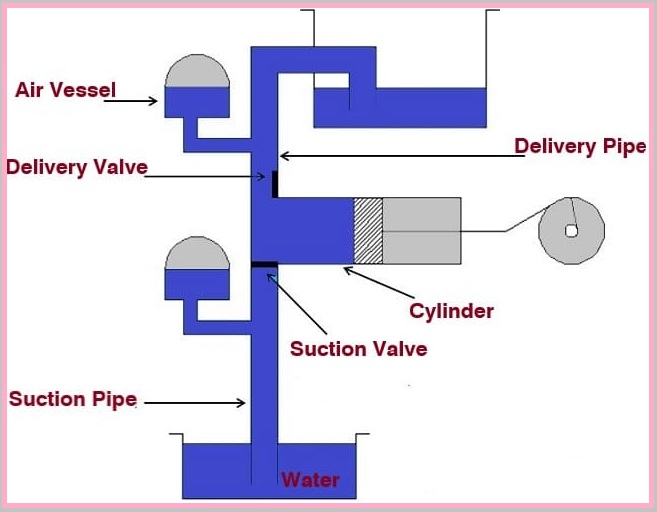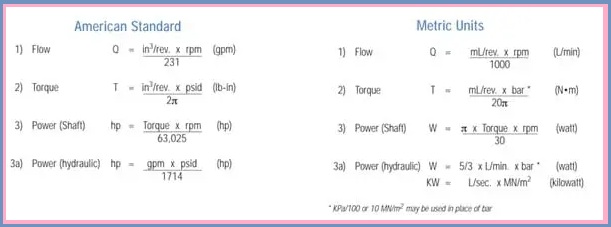A reciprocating pump is a mechanical device that converts the mechanical energy of fluid into hydraulic (pressure) energy. A reciprocating pump uses a piston or plunger to pump liquid from one location to another. These types of pumps are also called piston pumps because they use pistons or plungers to pump.
In this pump, the piston reciprocates up and down in the pump cylinder. As the piston moves towards the BDC, it draws in the fluid, and as it moves towards the TDC, it pressurizes the fluid. Hand pumps are the most common example of piston pumps. Bicycle pumps and syringe pumps are also the most commonly used examples of piston pumps.
The piston pump operates in response to the up and down movement of the piston. In contrast, dynamic pumps use impellers and diffusers to pump liquid from the low head region to the high head region. In 200 BC the piston pump was invented by the Greek explorer Ctesibius. The operation of these pumps is entirely dependent on their reciprocating parts (ie, pistons, plungers, or diaphragms). If the reciprocating piston is damaged, the reciprocating pump cannot pump the liquid.
Therefore, it is very important that the piston works properly with these pumps. During the working of the pump, the piston converts the kinetic energy of the fluid and converts it into pressure energy.

Piston pumps are used when relatively small amounts of liquid are transported under high pressure. Compared to centrifugal pumps, this type of pump is suitable for small flow rates at high pressures.
When using a plunger or piston pump, a certain amount of liquid (mainly sump) should be applied to transport from the lowest area to the highest area. For example, if you go to a bicycle water service, you can see that the water used for the service is collected from the sump and sprayed onto the bicycle by applying pressure from the nozzle.
Table of Contents
How Does Reciprocating Pump Work?
The reciprocating pump works at the precept of fantastic displacement. A reciprocating piston pump includes a piston that acts from side to side in a cylinder.
The piston is hooked up with a crankshaft with the assistance of a connecting rod. This piston actions because the connecting rod flow because of the movement of the crankshaft. The crankshaft connects with a motor that rotates it.
The pump cylinder is hooked up to a suction pipe and a discharge pipe with a suction valve and a transport valve. The inlet and outlet valves act as take a look at valves that permit the fluid go with the drift to go with the drift in a single direction. The fluid sucks into the cylinder via the inlet valve. The fluid exits the cylinder of the pump via the opening valve.

A piston pump works in the following way:
As you can see in the diagram above, when the crankshaft is in position A, the piston has a leftmost position inside the cylinder. When the crankshaft rotates from A to C (θ = 0° to 180°), the piston in the cylinder moves to the right.
When the piston moves to the right, a recess is created inside the cylinder. However, atmospheric pressure acts on the liquid surface in the reservoir, and this pressure is greater than the pressure in the cylinder.
Due to the pressure difference inside the cylinder and in the sump, the pump draws liquid from the sump into the suction line. The fluid opens the pump inlet valve and begins to enter the cylinder. At the end of the suction, the crankshaft rotates from C to A (θ = 180° to θ = 360°), and the piston also moves from the right cylinder position to the left position.
When the piston inside the cylinder moves to the left, it reduces the volume of the cylinder. As a result, the liquid pressure inside the cylinder becomes higher than the atmospheric pressure.
When the piston pressurizes the liquid and the internal pressure of the cylinder becomes higher than atmospheric pressure, the inlet valve closes, the pressure relief valve opens, and the liquid is passed through the supply pipe and moved to the desired mind.
Parts/Components of the Piston Pump
- Section Valve
- Delivery Valve
- Suction Pipe
- Delivery Pipe
- Cylinder
- Connecting rod
- Crank
- Piston and piston rod
- Air Vessel
- Strainer
I also attached an image for better understanding. Please see the below image to more about know about parts of the Piston Pump.

Types of Reciprocating Pump
- Single-Stage Pump
- Two-Stage Pump
- Single Acting Reciprocating Pump
- Double Acting Reciprocating Pump
- Reciprocating Pump with Air Vessel
- Reciprocating Piston Pump
- Diaphragm Pump
- Plunger Pump
The Efficiency of the Piston Pump
Pump efficiency is the ratio of output power to input power. The efficiency of the piston pump can be calculated by the following formula.
Efficiency = Output power / Input power
In the above equation, the output can be calculated by multiplying the fluid flow by the pressure increase. On the other hand, the input power can be calculated by multiplying the torque by the speed. Calculate the input and output power using the following formula:
Output power = Pressure rise * Flow rate
Input power = Torque * Speed
Volumetric efficiency and mechanical efficiency are also types of pump efficiency.
Mechanical efficiency depends on pressure and torque. The mechanical efficiency of a pump is the amount by which the pump converts input torque into output pressure.
Volumetric efficiency depends on speed and flow rate. Volumetric efficiency shows how well the pump converts the inlet velocity into the outlet flow rate.
Therefore, the overall efficiency of the piston pump is equal to the product of volumetric efficiency and mechanical efficiency. You can easily calculate the pump flow rate (Q), torque (T), shaft output, and hydraulic power using the following equations:

In the above formula, shaft power represents input power and hydraulic power represents output power.
Pros
- Used to provide high suction power.
- These positive displacement pumps do not require a suction process like pressure valves.
- While the dynamic pump acts on the rotational speed of the impeller, it works by the movement of the piston.
- Shows continuous flow rate.
- There are no priming issues. These pumps have no cavitation problems.
Cons
- These pumps require a high degree of maintenance.
- Most of its parts are susceptible to high wear.
- The flow rate is low.
- The cost is high.
- These pumps are not suitable for viscous liquids.
- Piston pumps are bulky and have heavy dimensions.
- Does not provide constant torque
- Requires a lot of maintenance
Applications/Uses of Reciprocating Pump
- Used for oil drilling purposes.
- It is used for pumping light oil.
- Piston pump used in pneumatic systems.
- Supply of small boilers with condensate.
- To inflate bicycle tires.
- Use in the natural gas industry.
- Use in the petrochemical industry
- Piston pump used in oil refineries.
- Used in water supply centers for vehicles, etc.
